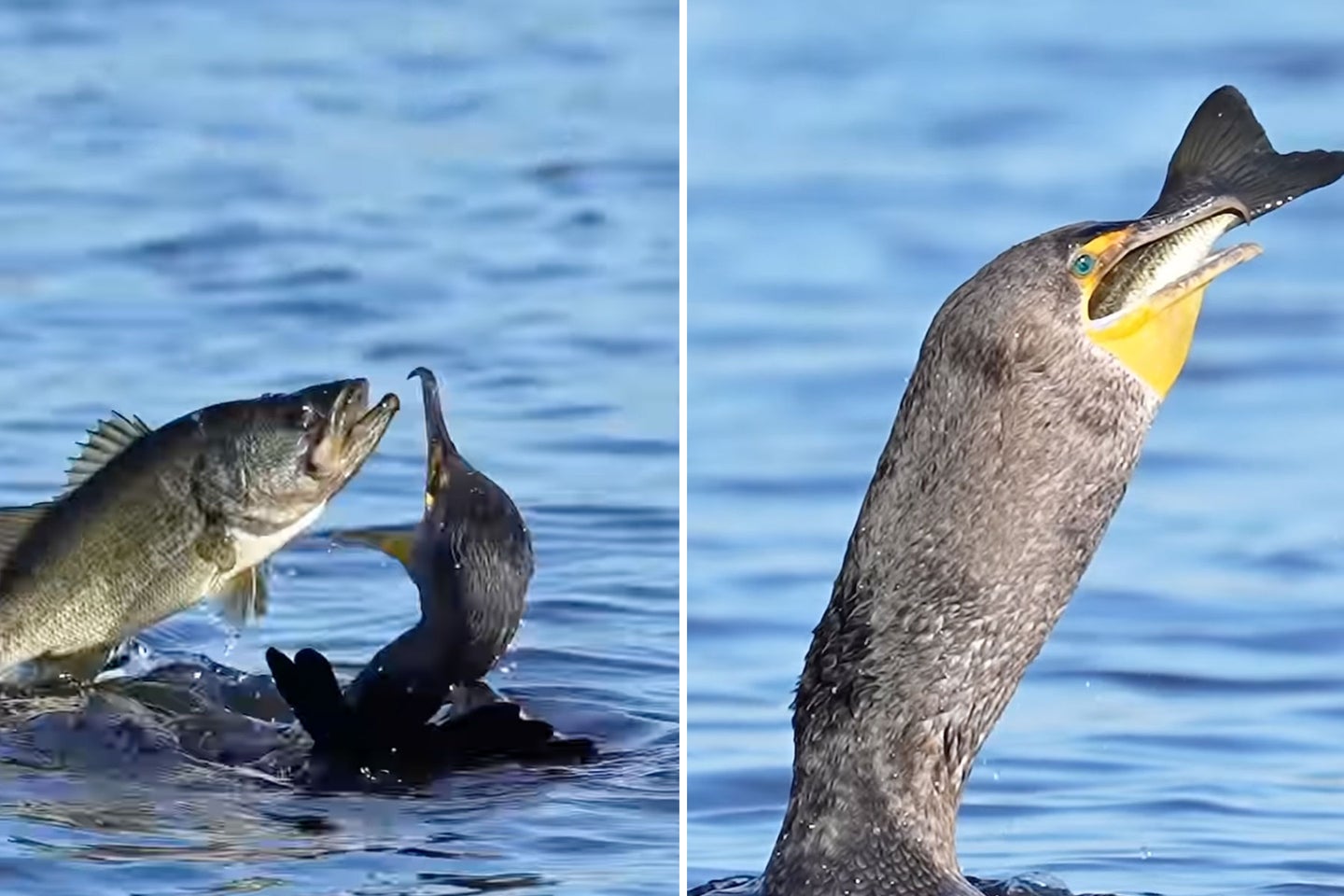Watch a Cormorant Eat a Largemouth Bass in One Massive Gulp

Cormorants are downright deadly when it comes to fish. The waterbirds are known to dive to catch all kinds of freshwater prey. And they sure don’t practice catch-and-release, regardless of whether they’re targeting a popular gamefish—in this case, America’s most popular freshwater gamefish.
On August 19, 2023, wildlife photographer Mark Smith shared a video on Instagram showing a double-crested cormorant attempting to gulp down a decent-sized buckethead. The footage is somewhat disturbing. The bird clamps the fish between its long beak but struggles to fit it in its mouth. After several tries, though, it’s able to swallow the fish head-first, causing its neck to bulge in the process. See it for yourself below.
“I’m always amazed at bird’s ability to capture prey. Cormorants especially,” wrote Smith in the caption. “These birds catch fish underwater by doing nothing more than chasing them down and grabbing them with their mouths.”
According to the U.S. Fish and Wildlife Service (USFWS), double-crested cormorants are found throughout much of North America. The species is considered “opportunistic and generalist feeders, preying on many species of fish but concentrating on those that are easiest to catch.” They typically eat “forage fish” less than 6 inches in length.
The species has long raised the ire of anglers in the Pacific Northwest, who worry cormorants are drastically impacting salmon populations in the region. The impact of the species on fish populations is the subject of several recent studies.
Read Next: Tennessee Family Wins $10,000 Prize After Killing 20 Pythons in the Florida Everglades
“Generally, cormorants eat fish species that are not valued by sport and commercial anglers but there are exceptions to this rule,” explains the USFWS. “A limited but growing body of research has shown that cormorants can take numbers of sport fish significant enough to have a negative impact on catch rates and in some cases, management can reduce those impacts and benefit fish populations. However, additional research in this area is needed to improve our understanding of the relationship between cormorants and their prey populations.”
The post Watch a Cormorant Eat a Largemouth Bass in One Massive Gulp appeared first on Field & Stream.
Articles may contain affiliate links which enable us to share in the revenue of any purchases made.
